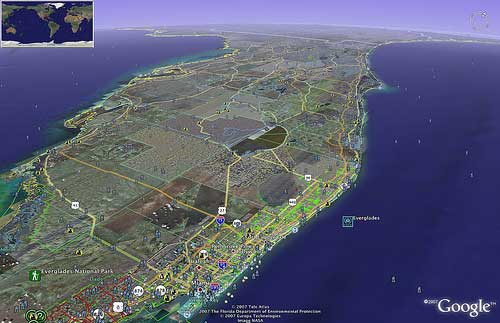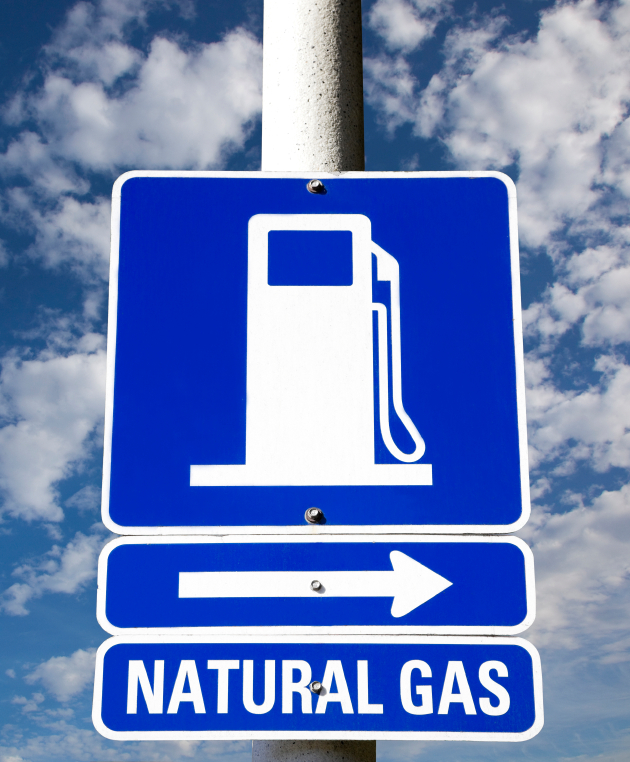In mid-2000, the chairman of Chesapeake Energy, a beleaguered natural gas producer, was returning on the company’s jet to his headquarters in Oklahoma City, buoyed with optimism. He was coming from a meeting with Calpine, a growing California-based power company, and he was encouraged by what he’d heard. Calpine and its competitors were building massive numbers of gas power plants, and when Chesapeake’s chairman asked the Calpine executives how they expected gas prices to stay low in the face of so much new demand, they said: “They’ll stay low because they’ve always been low. Plus, our plants are more efficient than our competitors’, so even as prices rise we’ll still make money.”
The next year, California utility giant Pacific Gas & Electric was forced into bankruptcy, driven by the statewide electricity crisis and the skyrocketing gas prices that were partly to blame for it. Within the next four years, Calpine and some of its highest-flying competitors would also be driven to bankruptcy largely by aggressive bets on gas power, forced to sell pipelines and power plants at a fraction of their cost.
It wasn’t the first time natural gas had been a thorn in the side of the power sector. Then again, the preceding gas rush wasn’t the last time the fuel would play panacea, either — just read the headlines these days.
Natural gas then
Natural gas came to prominence as a fuel for the power generation following World War II. Hydroelectric power, the source of growth in electricity supply up to that point, would eventually be constrained by a scarcity of suitable reservoir sites. Nuclear power, though much touted, was still young and hadn’t yet acquired the industry muscle it has today. But engineers had experience boiling water to make steam that would turn a turbine, and the main thing needed to make a lot of steam with natural gas was a lot of natural gas. Following the war, advances in metals and welding enabled the construction of an extensive network of pipelines, and the means to deliver large amounts of gas to power plants was at hand.
Steam boilers proliferated, fueled by natural gas, as well as oil and coal. Natural gas prices were tightly regulated, and in the mid-1970s there were almost 30 distinct price tiers, intended to incentivize new development while minimizing consumer impact (for example, gas from new reservoirs was allowed to sell at much higher prices in order to spur more discoveries). The oil crisis in the 1970s, and a belief that supplies of both oil and gas were running out, led Congress in 1978 to prohibit the construction of new oil- or gas-fired power facilities (until 1987, when the prohibition was repealed). The growth in electricity demand from the mid ‘70s through the late ‘80s was satisfied by coal and nuclear investments.
In 1990, Congress tightened air pollution standards, which made coal-fired power more expensive. In 1992, it deregulated electricity markets, enabling independent power producers like Calpine to expand to natural gas and sell that power to utilities. At the same time, there were advances in more efficient gas power plants, called “combined cycle” units; they used the waste heat from a gas-fired turbine to drive a steam turbine, producing more electricity from a given amount of natural gas. Finally, advances in drill control and seismic imaging reduced gas production costs, helping to keep prices low.
All these factors combined to make natural gas the fuel of choice for new power investments. Between 1992 and 2005, gas plants were virtually all that was built, and the size of the gas power fleet more than doubled. Utilities and other large gas customers had traditionally bought fuel on long-term contracts, paying a premium for predictability, but the continuing legacy of low prices inspired a shift toward spot markets (which are short-term, like the stock market). That was innocuous as long as prices stayed low, but spot markets can move quickly, and the shift set the stage for a decade of escalating and volatile gas prices.
They began with the California electricity crisis in 2000-01, spurred by market manipulation from Enron and other energy trading companies. After more intervening volatility, hurricanes in 2005 and ’06 pinched short-term supply and left analysts skittish about future reliability. Another price spike came in 2008; as oil prices skyrocketed, natural gas was in some cases used as a substitute, leading to a demand squeeze on gas that ran up its price too.
Linking all these episodes was a tightening supply-demand balance; natural gas use was increasing and expected to increase further, and it wasn’t clear that supply would keep up.
Natural gas now
These days, natural gas is experiencing another boom, thanks to increasing domestic supplies, widespread political support, and the fuel’s relative (but hotly disputed) environmental benefits.
The gas industry is doing all it can to stoke the boom, spending millions of dollars over the last few years to paint a picture [PDF] of newfound, “game-changing” abundance. The industry hopes to repair the fuel’s reputation as volatile and expensive — a reputation earned over the last decade amidst power company bankruptcies and hundreds of efficient gas power plants going underused.
Today, gas plants make up more than 40 percent of the power generating capacity in the U.S., even more than coal. But because coal is cheaper than gas, coal plants get run more often and gas plants are left to idle until demand spikes. Even the efficient combined cycle fleet operates at only about 40 percent of its potential, compared to about 70 percent for coal. Though new coal plants have become more expensive to build than gas plants, the many existing coal plants are so cheap to run that coal is still by far the largest source of electricity in the country. Still, because there are lots of underutilized gas plants, there’s a lot of room for easy growth in the gas power sector.
Against this backdrop, the gas industry is angling to shift more power generation to gas. And it’s got sympathy in high places, with the White House pushing a “Clean Energy Standard” that would give an advantage to gas power plants. The climate benefits of gas and its potential as a bridge to renewable energy are often mentioned (perhaps even more by the environmental community than the gas industry). These claims are more aspirations than predictions, and it’s important to understand three premises on which they’re based.
The first premise is the reason natural gas enters the climate policy discussion at all — gas-fired power plants release about half as much CO2 as their coal counterparts, for the same amount of electricity. Combustion in a power plant, however, isn’t the only source of greenhouse-gas (GHG) emissions for gas or coal, and exactly how much less GHG-intensive gas is in total has recently become less certain. Researchers are still gathering the right data to compare gas and coal over the
ir fuel “lifecycles,” including initial extraction, processing, and distribution. Natural gas will likely end up being between 15 and 50 percent less GHG-intensive than coal, but where in this spectrum it falls is important. The smaller the climate benefits, the less tolerable are the risks of air and water contamination from gas drilling (more on those risks below).
The second premise is the ability to immediately begin replacing coal with natural gas — even more quickly than we could with renewable energy like solar and wind. This is because the “levelized cost” (which includes facilities’ construction and operation) of solar power is still significantly higher than natural gas, and while new wind power is now roughly as cheap as new gas power, the technology to make solar and wind energy available when we need it is still developing. To be sure, solar power has been getting steadily cheaper, and many predict it will be competitive with new coal or gas plants in the next five to 10 years. We are also learning how to integrate variable power into the electricity system by using available-anytime (called “dispatchable”) sources like hydro or grid storage to smooth out the variable ones [PDF], and by shifting some peak power demand to non-peak times. So from a current cost and technology perspective, natural gas still has an advantage over renewable alternatives — e.g., the large number of existing underutilized power plants — but that advantage is declining, and may well vanish in the next 10 to 15 years.
The third premise is the reason we hear so much about natural gas these days — its newfound abundance at an apparently low cost. The gas industry has learned over the past five years how to extract large amounts of natural gas from shale deposits much more cheaply than it previously could, and it is seeking large new markets for its newly abundant supply. Hydraulic fracturing (aka “fracking”) technically isn’t new, but combining it with horizontal drilling and much higher volumes of chemical-laced drilling fluids has opened up swaths of gas fields that were previously not economically viable.
(A series of articles in The New York Times two weeks ago critically examined claims of abundance, with industry and government sources questioning how productive new shale resources really are. In an indication of how important to the industry the appearance of abundance is, the articles resulted in a quick, detailed volley of responses from industry consultants and executives.)
Natural gas prospects
While the uncertainty around the GHG impact of natural gas raises questions about the extent of its climate benefits, concerns about water pollution caused by fracking could threaten the premise of cheap abundance. The gas industry has been defiant about those concerns, maintaining that the fracking process is perfectly clean and safe even as mounting evidence suggests otherwise. On this, the industry’s stance has been an exercise in obfuscation, alienating potential environmental allies. One of its favored tacks is to insist that no drilling fluid or gas could migrate through fissures originating thousands of feet below the surface directly into shallow groundwater, misdirecting attention away from fracking’s two most egregious contamination risks: faulty well casing and disposal of tainted wastewater. Industry partisans might respond that those two risks are not part of hydraulic fracturing per se and are present with all oil and gas drilling. But those are semantic games, since it is the high pressures used in high-volume hydraulic fracturing that make well breaches more common, and those same high volumes and pressures produce more wastewater than conventional drilling.
Where does this leave us? Recent advances in hydraulic fracturing seem a tantalizing answer to inadequate supply. Hundreds of efficient gas power plants sit underused across the country, awaiting their chance to bridge the way from coal to renewables. But the promise of newfound abundance is based on the ability to conduct fracking responsibly — an aspiration without a regulatory carrot, since hydraulic fracturing was exempted in 2005 from the Safe Drinking Water Act (the main basis for EPA authority to regulate drilling or injection activities).
If some of the worst-case concerns surrounding fracking and gas’s full climate footprint are borne out, we will have gotten the natural gas story wrong … again. Or perhaps even worse, the environmental community could get stuck pushing back against gas while virtually everyone else is rushing toward it. As it stands, the gas industry and its place in the power sector seem to be at yet another crossroads.



